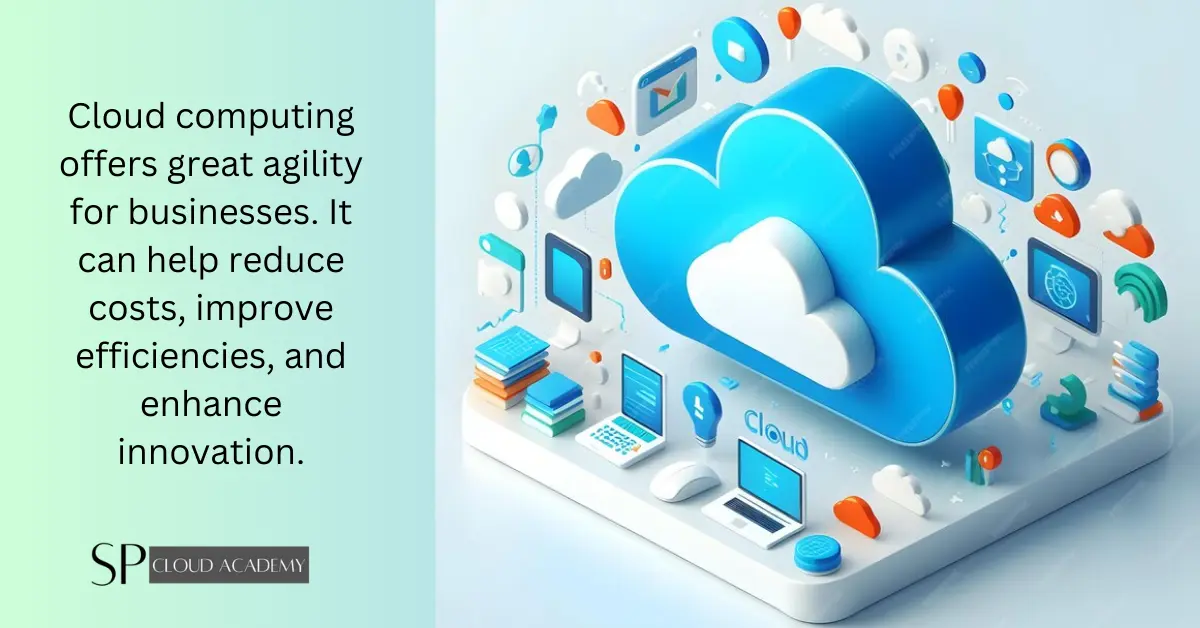Introduction to Cloud Applications
Definition of Cloud Applications
Cloud applications, also known as cloud apps, are software programs where cloud-based and local components work together. These applications rely on remote servers for processing logic that is accessed through a web browser with a continual internet connection. Unlike traditional applications that run on a local machine, cloud applications leverage the cloud infrastructure to provide scalability, reliability, and accessibility.
Historical Overview of Cloud Computing
The concept of cloud computing dates back to the 1960s when J.C.R. Licklider envisioned an “intergalactic computer network.” However, it wasn’t until the late 1990s and early 2000s that cloud computing began to take its modern form. The introduction of Salesforce in 1999 marked the beginning of cloud applications as we know them, followed by Amazon Web Services (AWS) in 2006, which provided a comprehensive suite of cloud-based infrastructure services. The evolution continued with the emergence of various cloud service models, fundamentally transforming IT infrastructure and service delivery.
Importance and Relevance in Modern Business
Cloud applications have become indispensable in today’s business environment. They offer businesses the ability to operate more efficiently and cost-effectively, providing access to powerful computing resources without the need for significant upfront investments in hardware and software. Moreover, cloud applications enable seamless collaboration across geographies, foster innovation through scalable and flexible solutions, and enhance business continuity through robust disaster recovery options.
Types of Cloud Applications
Software as a Service (SaaS)
Software as a Service (SaaS) is the most common type of cloud application, where software is delivered over the internet on a subscription basis. Users can access the software via a web browser, without needing to install or maintain it. Examples of SaaS include Google Workspace, Microsoft Office 365, and Salesforce. SaaS offers several advantages, including reduced IT workload, scalability, and ease of use.
Platform as a Service (PaaS)
Platform as a Service (PaaS) provides a cloud-based platform allowing developers to build, deploy, and manage applications without the complexity of maintaining the underlying infrastructure. PaaS includes services like Google App Engine, Microsoft Azure, and Heroku. It enables faster development cycles, collaboration among distributed teams, and the ability to leverage pre-built components and frameworks.
Infrastructure as a Service (IaaS)
Infrastructure as a Service (IaaS) offers virtualized computing resources over the internet. It provides the fundamental infrastructure of virtual servers, storage, and networking capabilities. AWS, Microsoft Azure, and Google Cloud Platform are leading IaaS providers. IaaS is particularly beneficial for businesses that need to scale their IT resources dynamically, offering flexibility and cost savings compared to maintaining physical infrastructure.
Benefits of Cloud Applications
Cost Efficiency
One of the most significant benefits of cloud applications is cost efficiency. By using cloud services, businesses can reduce or eliminate the need for on-premises hardware and software. Instead of large capital expenditures, cloud services typically follow a pay-as-you-go model, converting capital expenses to operational expenses. This model allows businesses to pay only for what they use, optimizing their expenditure.
Scalability and Flexibility
Cloud applications offer unparalleled scalability and flexibility. Businesses can quickly scale their operations up or down based on demand without the need for significant investments in new hardware or software. This agility allows companies to respond more effectively to market changes and customer needs. Moreover, cloud services often provide global reach, enabling businesses to expand their operations internationally with ease.
Accessibility and Collaboration
With cloud applications, accessibility is a major advantage. Employees can access cloud services from anywhere, using any device with an internet connection. This enhances productivity and collaboration, especially in remote or distributed work environments. Tools like Google Workspace and Microsoft Office 365 allow real-time collaboration on documents, improving teamwork and efficiency.
Security and Compliance
While security is a concern for many when it comes to cloud adoption, reputable cloud service providers invest heavily in security measures and compliance certifications. These providers often offer advanced security features, including encryption, identity and access management, and regular security audits. Compliance with standards like GDPR, HIPAA, and SOC 2 helps businesses meet regulatory requirements and protect sensitive data.
Key Features of Cloud Applications
Multi-Tenancy
Multi-tenancy is a core feature of cloud applications, allowing multiple customers to share the same application instance while keeping their data separate and secure. This approach optimizes resource utilization and reduces costs for both providers and users. It also simplifies updates and maintenance, as changes can be made centrally and applied across all tenants.
Self-Service Provisioning
Self-service provisioning allows users to access and configure cloud services on-demand without the need for human intervention. This feature empowers users to quickly deploy resources, such as virtual machines or storage, through a user-friendly interface or API. It accelerates the time-to-value for new projects and reduces dependency on IT teams.
Elasticity
Elasticity refers to the ability of cloud applications to dynamically scale resources up or down based on workload demands. This feature ensures optimal performance and cost-efficiency, as resources can be adjusted in real-time to meet fluctuating demand. For instance, an e-commerce platform can scale up during peak shopping seasons and scale down during off-peak periods.
Metered Service
Metered service, or pay-as-you-go pricing, is a fundamental characteristic of cloud computing. Users are billed based on their actual usage of resources, such as computing power, storage, and bandwidth. This model promotes cost transparency and efficiency, allowing businesses to monitor and control their expenses more effectively.
Current Trends in Cloud Applications
AI and Machine Learning Integration
The integration of artificial intelligence (AI) and machine learning (ML) into cloud applications is a significant trend. Cloud platforms offer AI and ML services that enable businesses to harness the power of these technologies without the need for specialized infrastructure. Use cases include predictive analytics, natural language processing, and automated customer service.
Edge Computing
Edge computing involves processing data closer to its source, rather than relying solely on centralized cloud data centers. This trend is driven by the need for low-latency applications and the growth of IoT devices. Edge computing enhances performance, reduces bandwidth costs, and improves data privacy by keeping sensitive data local.
Hybrid Cloud Solutions
Hybrid cloud solutions combine on-premises infrastructure with public and private cloud services, offering a balanced approach to cloud adoption. This trend allows businesses to leverage the scalability and flexibility of the cloud while maintaining control over critical data and applications. Hybrid cloud strategies are particularly popular in industries with stringent regulatory requirements.
Serverless Computing
Serverless computing, also known as Function as a Service (FaaS), allows developers to build and run applications without managing servers. Cloud providers automatically allocate resources as needed, enabling developers to focus on writing code. This model simplifies deployment, reduces operational complexity, and can be more cost-effective for certain workloads.
Internet of Things (IoT)
The proliferation of IoT devices is driving demand for cloud applications that can handle vast amounts of data generated by these devices. Cloud platforms provide the infrastructure needed to collect, store, and analyze IoT data in real-time. This capability is critical for industries such as healthcare, manufacturing, and smart cities, where IoT applications are transforming operations.
Challenges in Cloud Adoption
Data Security Concerns
Data security remains a primary concern for organizations adopting cloud applications. The risk of data breaches, loss, and unauthorized access can deter businesses from moving sensitive information to the cloud. However, by implementing robust security measures, such as encryption, multi-factor authentication, and regular security audits, these risks can be mitigated.
Compliance and Regulatory Issues
Different industries and regions have specific compliance and regulatory requirements that must be adhered to when using cloud services. Navigating these requirements can be complex, particularly for global businesses. Ensuring that cloud providers comply with relevant standards and certifications is essential for maintaining regulatory compliance.
Integration with Existing Systems
Integrating cloud applications with existing on-premises systems can be challenging. Compatibility issues, data migration, and synchronization between cloud and legacy systems require careful planning and execution. Using APIs, middleware, and integration platforms can help streamline this process and ensure seamless interoperability.
Downtime and Reliability
Despite the high availability guarantees from cloud providers, downtime can still occur due to various factors, such as network outages, hardware failures, or cyberattacks. Businesses must plan for potential disruptions by implementing redundancy, disaster recovery plans, and failover mechanisms to maintain continuity.
Best Practices for Implementing Cloud Applications
Strategic Planning and Assessment
Effective cloud adoption begins with strategic planning and assessment. Organizations should evaluate their current IT infrastructure, identify suitable applications for migration, and define their cloud strategy. Conducting a thorough cost-benefit analysis and risk assessment helps in making informed decisions.
Choosing the Right Cloud Service Provider
Selecting the right cloud service provider is critical to the success of cloud adoption. Factors to consider include the provider’s reliability, security measures, compliance certifications, service offerings, and pricing models. Engaging in a detailed evaluation process and seeking references can aid in making the right choice.
Data Migration Strategies
Data migration is a crucial step in cloud adoption. Developing a comprehensive migration plan that includes data assessment, cleansing, and mapping is essential. Using automated migration tools and services can simplify the process and reduce the risk of data loss or corruption. Ensuring data integrity and continuity is paramount during migration.
Monitoring and Management
Ongoing monitoring and management of cloud applications are vital to maintain performance, security, and compliance. Implementing robust monitoring tools and practices allows for proactive identification and resolution of issues. Regular audits and performance reviews help in optimizing cloud resources and achieving operational efficiency.
Ensuring Security and Compliance
Maintaining security and compliance is a continuous effort in cloud environments. Organizations should implement a layered security approach, including encryption, access controls, and regular security assessments. Staying informed about changes in regulatory requirements and updating policies accordingly ensures ongoing compliance.
Case Studies: Successful Cloud Application Implementations
Example 1: Cloud Application in E-commerce
An e-commerce company leveraged cloud applications to enhance its online shopping experience. By migrating to a SaaS-based e-commerce platform, the company achieved greater scalability and flexibility. The cloud platform provided advanced analytics, personalized customer experiences, and seamless integration with third-party services. As a result, the company saw a significant increase in sales and customer satisfaction.
Example 2: Cloud Application in Healthcare
A healthcare provider adopted cloud applications to improve patient care and streamline operations. By using a combination of SaaS and PaaS solutions, the provider developed a telehealth platform that enabled remote consultations and real-time patient monitoring. The cloud-based system also facilitated secure data sharing between healthcare professionals, improving collaboration and decision-making.
Example 3: Cloud Application in Education
An educational institution implemented cloud applications to support online learning and administrative functions. The institution used a blend of SaaS for learning management systems and IaaS for scalable IT infrastructure. This approach provided students and faculty with reliable access to educational resources and enabled the institution to handle increased demand for remote learning.
Future of Cloud Applications
Predictions and Emerging Technologies
The future of cloud applications is shaped by emerging technologies and evolving business needs. Key trends include the increased adoption of AI and ML, the rise of edge computing, and the expansion of hybrid and multi-cloud strategies. Quantum computing is also poised to revolutionize cloud applications, offering unprecedented computational power for complex problem-solving.
Impact on Various Industries
Cloud applications will continue to transform industries such as healthcare, finance, manufacturing, and retail. The ability to harness big data, improve operational efficiency, and deliver personalized experiences will drive innovation and growth. Industries will benefit from enhanced agility, improved customer engagement, and cost savings.
The Role of Quantum Computing
Quantum computing holds the potential to solve problems that are currently infeasible for classical computers. As cloud providers develop quantum computing services, businesses will be able to tackle complex challenges in areas such as cryptography, drug discovery, and financial modeling. The integration of quantum computing with cloud applications will unlock new possibilities and drive technological advancements.
Conclusion
Recap of Key Points
Cloud applications have revolutionized the way businesses operate, offering numerous benefits such as cost efficiency, scalability, and accessibility. Understanding the different types of cloud services and their key features is essential for leveraging their full potential. While challenges exist, following best practices and learning from successful implementations can lead to a successful cloud adoption journey.
Final Thoughts on Cloud Applications
The adoption of cloud applications is no longer a choice but a necessity for businesses aiming to stay competitive in the digital age. As technology continues to evolve, cloud applications will play an increasingly vital role in driving innovation and growth. By embracing cloud computing, organizations can achieve greater agility, efficiency, and resilience in a rapidly changing world.
See Also
-

Battle of the Tech Titans: A Deep Dive into Google vs. Microsoft Ecosystems
-

eSIM Revolution: Why SIM-Less Smartphones Are the Future of Mobile Tech
-

Sandboxing Technology Explained: How It Shields Your System from Cyber Threats
-

The Metaverse Revolution: How It’s Changing the Way We Work, Play, and Live
-

Digital Twins: The Future of Smart Technology and How It’s Transforming Industries
-

The Future Is Now: 7 Game-Changing Trends in Digital Transformation
